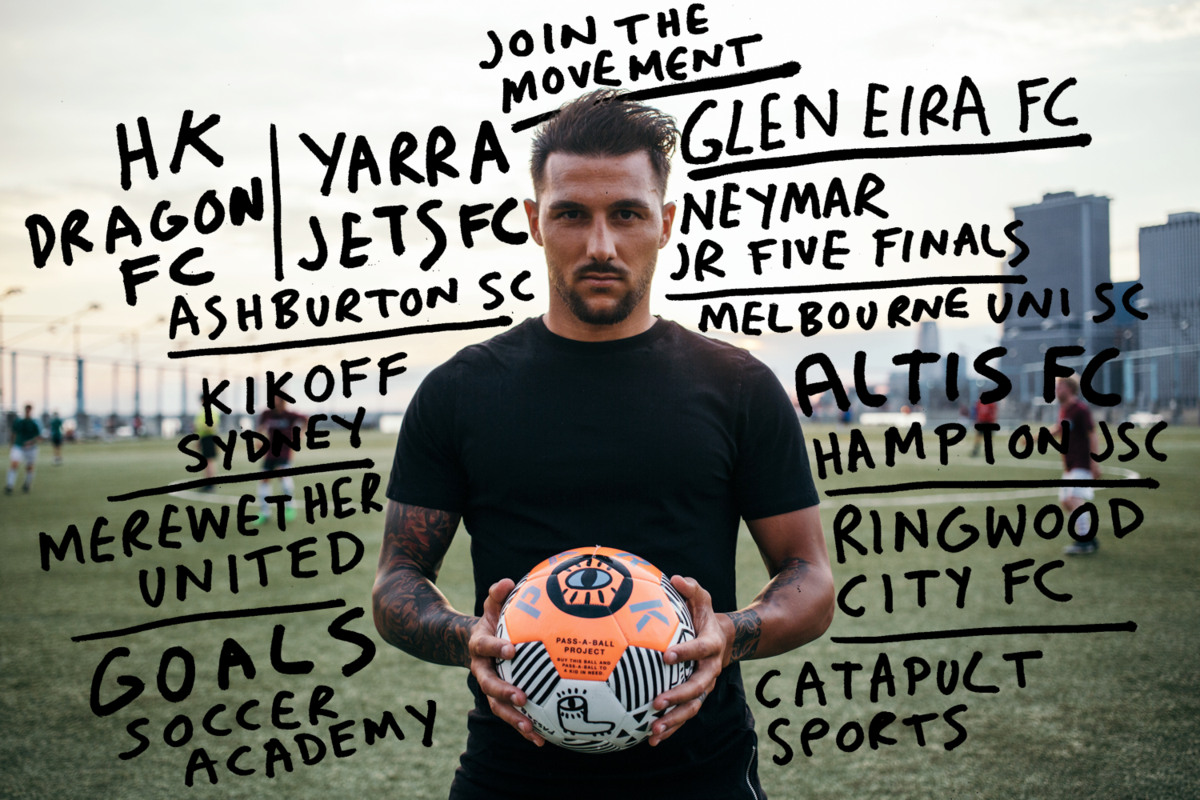Park is a social enterprise that’s using the global appeal of soccer to support charities and ‘level the playing field’. They sell footballs, active wear, soccer kit, and equipment.
Sam Davy is the founder, and unsurprisingly a big soccer fan. He enjoys the game so much, he wants to share both the pleasure of playing the game, as well as using it to unite communities through making the game more accessible to more people.
The business model operates on two levels: the founding concept is to donate a football to a community in need every time someone buys one from the online store. So far, the Pass-a-ball concept has seen more than 10,000 balls distributed all around the world.
The other angle is to donate 50% of profits from their clothing and equipment to charities with which they’ve partnered. This approach is still being developed, and they’re currently planning their first round of grants.
According to Sam the brand has been well received with a solid Australian customer base, and a growing international community.
“Currently our market is split with 50% of demand coming from Australia, 30% from the US, and then the remainder distributed among Japan, UK and Europe.” Sam says.
But at the core of the business is getting more footballs into the hands (or feet) of people around the world. And he’s managed to earn the support of some of the world’s leading clubs.
“We work with a lot of clubs that have existing relationships in their local area, and they distribute balls where they’re needed. And then there are other clubs that don’t have any of that in place, so they look to us to help them. And,that sort runs the gamut from the community level, all the way up to professional level. We’re talking with the UEFA Football Federation, and all sorts of different people around bringing that kind of direct and tangible impact into the centre of the field.” Sam says.
While soccer is a relatively simple game, some groups have far less access to footballs or gear, and Park is working to level the playing field.
“If a club buys 200 balls from us, then there’s obviously 200 balls that can be passed into projects and clubs in that area, to start connecting the football community, and to bring some equality. There’s often the well-off, affluent football clubs that have well run committees, and parent groups that get more out of the game than the more disadvantaged clubs that are always kind of scrapping around for equipment and don’t have the same level of support.”
Sam works directly with charities to help them with gear, or to go deeper and build vital community linkages.
“We’ve worked with The Asylum Seeker Resource Centre from the start. And then they set up an organisation called Community Soccer Hub, which now services about 500 kids a week with a structured football program that’s really high quality. They’ve got their own League, they have girls teams, kids teams, and we’re providing hundreds of footballs into those programmes every year to enable those programmes to run, which is really great” Sam says.
“We also work with an Australian charity called Fair Game, an American charity called Street Soccer USA, and there’s one in London called Bloomsbury FC.”
Investment Opportunity in Women’s Soccer Gear
Women’s soccer has boomed in the past decade, but sadly the equipment and apparel brands haven’t kept up. Park is focussed on changing that.
“We’re actively out talking to some investors at the moment. We’re doing a seed round to help us develop the new product that we’re working on. It’s all centred around the opportunity in women’s football. There’s nobody really making women’s football kit, you’ve basically got professional players running around in men’s shorts. Over the last 12 to 18 months the community let us know, in no uncertain terms, that that’s a problem which needs to be solved.” Sam says.
“So we’re developing a technical kit offer that’s aimed squarely at helping female footballers, which I think will be really great. There’s a huge drop-off in participation of teenage girls in team sports, at around the 13-14 year mark, and a lot of that is down to feeling uncomfortable in the clothing that they’re being asked to wear. There’s a real opportunity there to create some impact, but also, from a business perspective, it’s a big gap in the market.”

